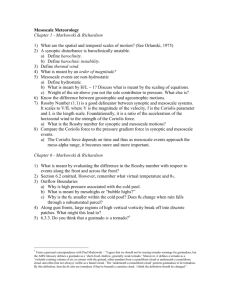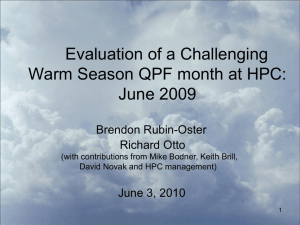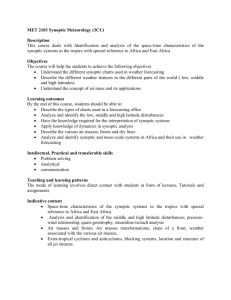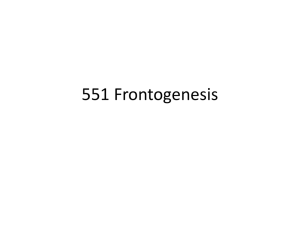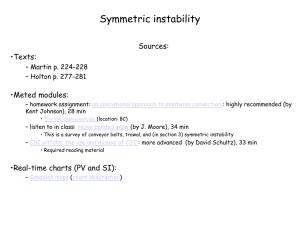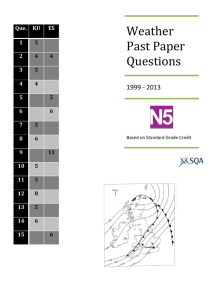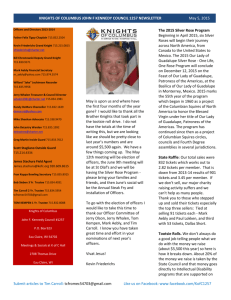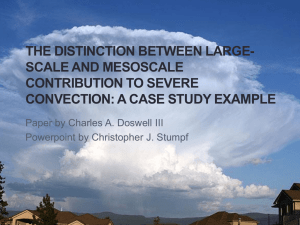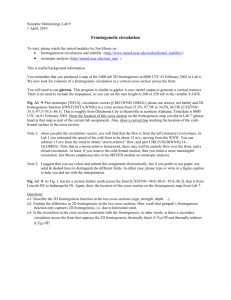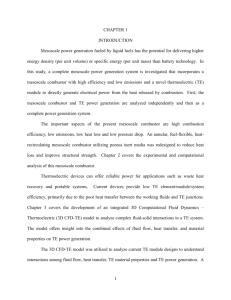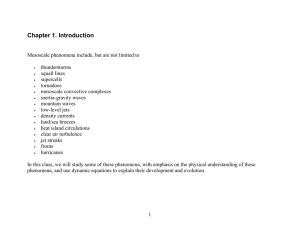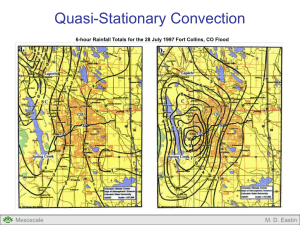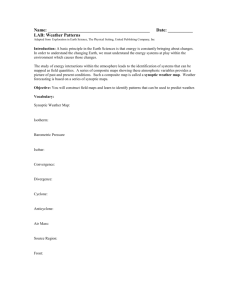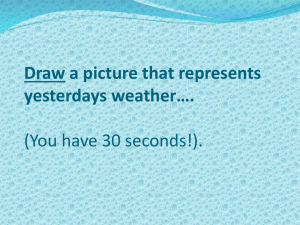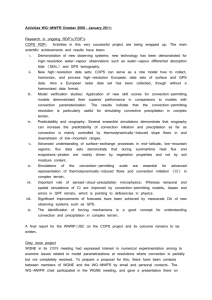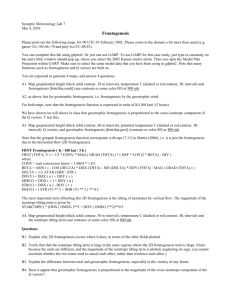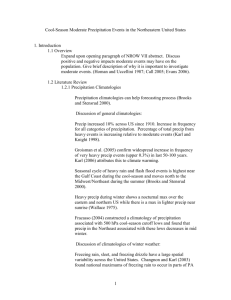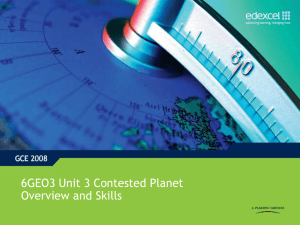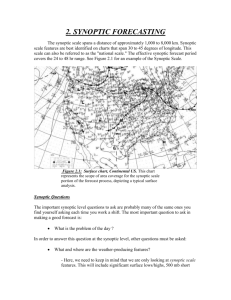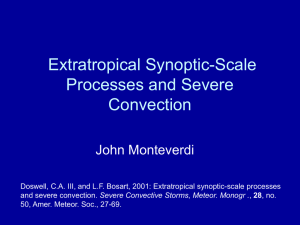long_lived_thundesnow
advertisement
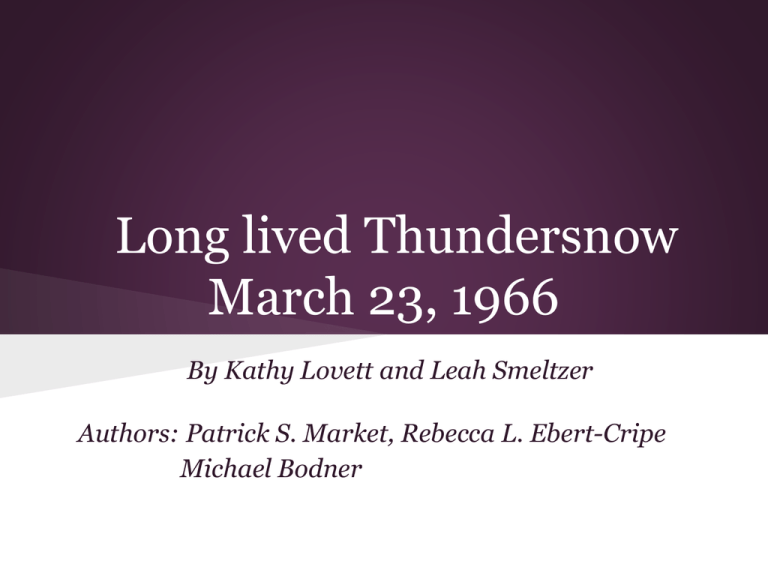
Long lived Thundersnow March 23, 1966 By Kathy Lovett and Leah Smeltzer Authors: Patrick S. Market, Rebecca L. Ebert-Cripe Michael Bodner March 23, 1966 • • • 7" of snow fell in Eau Claire, Wisconsin North of the city received as much as 18" 9 total hours of thundersnow Purpose • • • To reveal characteristics of a particularly strong long lived thundersnow event Determine if convection was slantwise or upright. Or whether it evolved from one type to another. Examine static stability and its tendency that harbored recurrent lightning and thunder. Methodology • • Observed data o 82 Upper-air Radiosondes used Special run of the Workstation Eta (WS-Eta) mesoscale numerical weather forecasting system developed at NCAR o o o 32 km convection parameterized grid spacing captured mesoscale banding best matched representation Synoptic Analysis • Synoptic ingredients for significant snow surface low WCB (warm isentropic conveyor belt) 500 mb vort max 300 coupled jet Q convergence Synoptic Analysis Synoptic Analysis Synoptic Analysis Synoptic Analysis Mesoscale analysis • • • Frontogenesis o well developed warm front o strong ascent on warm side UVM- 20 ubs-1 over Eau Claire Static Stability o o T advection at 700-600mb dominant diabatic heating contributed at 700mb moister environment Symmetric Instability o o o Equivalent Potential Vorticity (EPV)-can provide access of CSI presence SCAPE- potential of slantwise convection Deep moisture during thundersnow Mesoscale Analysis Mesoscale cont. Mg and θe contours became nearly parallel (Fig.30), suggesting an environment that was neutral to moist slantwise perturbations Summary • • • Ws-ETA produced a successful numerical simulation duplicating the surface cyclone, acceptable precipitation field cross sections revealed trend toward destabilization w/ frontogenesis, Mg, Theta E, and Omega. although statically stable enough, instability for lightning was created. Even with relatively coarse grid employed the model rendered well the parent frontogenetic circulation and resultant snow. Summary • • negative EPV at 0300 UTC shows convection in the 550650 mb. Omega analysis showed sloped response. small perturbations to 0900 UTC EPV shows conditions for neutral moist slantwise. Ws-Eta revealed moisture and ascent throughout most of the event. The soundings for this event minus one showed no CAPE. Yet showed many characteristics expected of an thundersnow environment Final Conclusion • Eau Claire Thundersnow resulted from Prolonged existence of frontogenesis o Weak symmetric stability northeast of surface cyclone o Vertical Motion maximum south of the Frontogenesis maximum o • Set-up was created and maintained by o presence of a trowal airstream over Eau Claire for an extended period Features to look for to anticipate prolonged thundersnow events 1. Presence of Trowel Axis over forecast area a. this was responsible to extended time period 1. Maximum in warm advection just above the top of the temperature inversion along trowel axis with decreasing values aloft 1. An increase in diabatic heating just above temperature inversion along trowel axis Features to look for to anticipate prolonged thundersnow events Mostly below freezing Significant Lapse Rate >6.5 K km-1 Frontal Inversion Most unstable parcel that originates from a level warmer than -10 C Questions?
